Mysterious Jade Cong – Perplexing Ancient Chinese Artifact
A. Sutherland - AncientPages.com - One of the most perplexing ancient Chinese artifacts ever discovered is the jade cong that offers evidence our ancestors were familiar with advanced ancient technology. The purpose and function of the jade cong are still unknown.
Jade Cong And The Mysterious Liangzhu Culture
A cong is an enigmatic form of ancient Chinese jade artifact. Archaeological discoveries reveal the earliest form of cong was produced by the Liangzhu culture (3400-2250 BC).
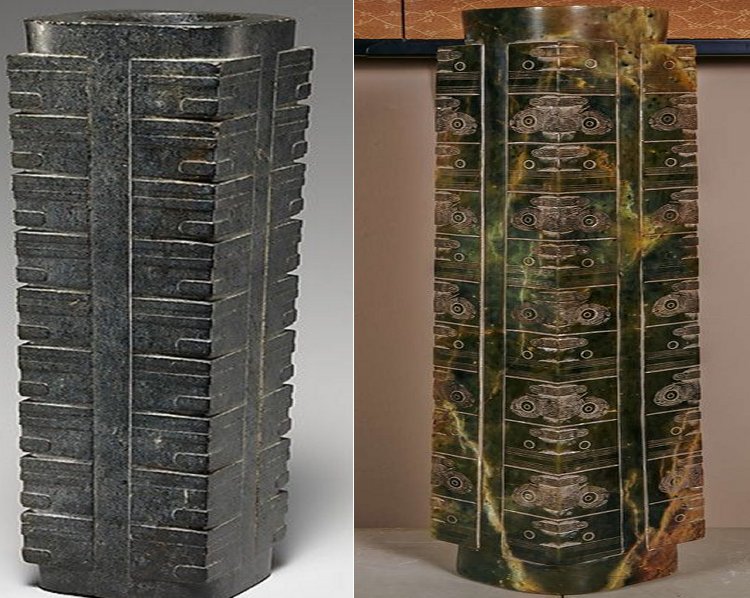 Letf: A jade cong with notches. Image: MetMuseum: Right: Another jade cong. Image: 1stdibs.com
Letf: A jade cong with notches. Image: MetMuseum: Right: Another jade cong. Image: 1stdibs.com
The jade cong must have been of great importance to the ancient Chinese, and other countries civilizations continued to manufacture the artifact. Several sophisticated examples of the cong appeared during the Shang (1600-c.1046 BC) and Zhou (1046 - 256 BC) dynasties.
Why the Liangzhu culture manufactured the jade cong?
The Liangzhu people inhabited China's Jiangsu province during the third millennium BC. Archaeologists have unearthed many extraordinary objects in royal tombs, palaces, and workshops.
All these ancient items offer evidence the Liangzhu people possessed knowledge of advanced ancient technology and produced sophisticated jade artifacts.
Unfortunately, the Liangzhu people did not have a system of writing. No records can shed light on their ancient culture, historical events, leaders, and religious beliefs.
Without written records, the meaning of jade objects, the significance of their shapes and decorations, and their purpose and function in society remain unknown.
Advanced Technology Was Used To Manufacture Jade Cong
What kind of sophisticated technology was involved in the production of jade cong?
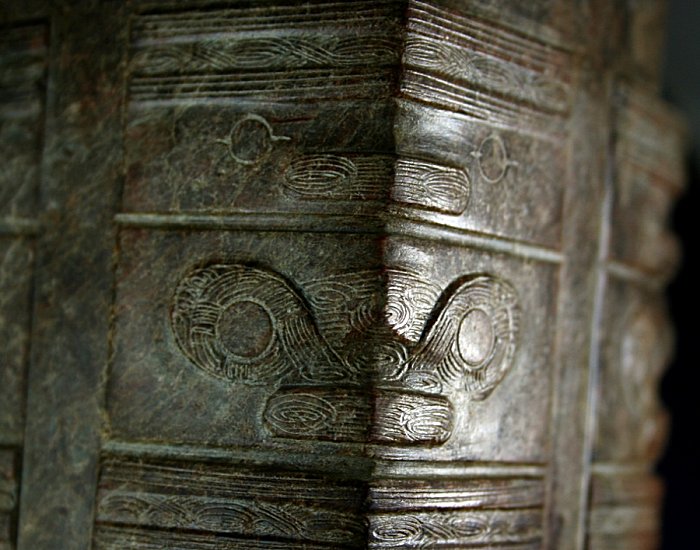 What were these mysterious jade objects? Why were these artifacts so important to the ancient Chinese? Image credit: Guwan Soucang Chinese Antiques
What were these mysterious jade objects? Why were these artifacts so important to the ancient Chinese? Image credit: Guwan Soucang Chinese Antiques
Was it perhaps an advanced drilling process that is essentially identical to the drilling process we use today? If true, it would be amazing because this Neolithic production of cong occurred in 3400-2250 BC, about 5,000 years ago.
"Some holes may have been cut using a stone gouge with the jade on a rotating turntable.
This method is thought to have been employed at a Bronze Age workshop in northern Vietnam," writes D. Hatcher Childress in his book "Ancient Technology in Peru and Bolivia."
An x-ray of one of the very tall cong shows that "a hole was made from each end using a combination of large and small drills. The arc-shaped mark was cut with a thick grinding wheel. This drill, like the others, was tubular. The two holes meet halfway along the length of the cong, but they were misaligned, barely joining.
The grinding wheel that made the arc-shaped marks would have been mounted on a rotary lathe..."
Form And Decorations Of Jade Cong
A cong is formed as a tube with a circular inner section and a squarish outer section.
The outer surface is divided horizontally or vertically, and the whole defines a hollow cylinder embedded in a partial rectangular block. A cong was produced in various sizes, shapes, and with different decorations.
Sometimes, a jade cong may be squat or taller than it is wide. The outer faces are sometimes decorated with mask-like faces, which may be related to the "taotie," a motif found on later Chinese ritual bronze vessels dating from the Shang and Zhou dynasty.
Jade Cong And Its Unknown Function And Purpose
One of this ancient artifact's most intriguing aspects is its unknown function and purpose.
 The earliest cong were produced by the Liangzhu culture (3400-2250 BC)
The earliest cong were produced by the Liangzhu culture (3400-2250 BC)
Congs shaped as square tubes with circular holes are among the most impressive yet enigmatic ancient Chinese jades. Their function and meaning are entirely unknown. The central motif used to decorate them was a simplified monster face pattern, which fitted around the square-sectioned corners. The cong was decorated with circles; some were assumed to depict eyes that were only occasionally visible.
What was the symbolism behind the eyes? Researchers are still unable to answer that question.
Ancient Chinese Produced Many Jade Artifacts
China has been the leading producer of jade objects for over 5,000 years.
Jade is a hard mineral. Most jade does not have the color and translucence expected in a gemstone. However, when early people found these particular pieces of jade, they were often inspired to craft them into unique and sometimes sacred objects.
Jade is a durable, colorful material that can be worked into shapes and highly polished. These properties make it a very desirable gemstone. Jade has been used to make jewelry items such as pendants, necklaces, rings, bracelets, earrings, beads, cabochons, tumbled stones, and other things.
These jewelry items are often made of solid jade, combined with other gems, or placed in settings made from gold, silver, or other precious metals. In addition to jewelry, jade makes small sculptures, ornaments, religious art, and small functional objects.
Although the Chinese produced several jade artifacts, many of which have been discovered, almost nothing is known about the role that jade cong played in ancient times.
Written by – A. Sutherland - AncientPages.com Senior Staff Writer
Copyright © AncientPages.com All rights reserved. This material may not be published, broadcast, rewritten or redistributed in whole or part without the express written permission of AncientPages.com
Expand for referencesMore From Ancient Pages
-
 Aglaonice (Aganice): Female Greek Astronomer From Thessaly Was Believed To Be A Witch
Featured Stories | Sep 4, 2019
Aglaonice (Aganice): Female Greek Astronomer From Thessaly Was Believed To Be A Witch
Featured Stories | Sep 4, 2019 -
 7,000-Year-Old Male Skeleton In Garment Decorated With Sea Shells, Red Deer Teeth Identified In France
Archaeology | Mar 9, 2017
7,000-Year-Old Male Skeleton In Garment Decorated With Sea Shells, Red Deer Teeth Identified In France
Archaeology | Mar 9, 2017 -
 Thousands Unknown Ancient Structures Seen From Space: Puzzling Aerial Archaeology In The Middle East
News | Feb 15, 2014
Thousands Unknown Ancient Structures Seen From Space: Puzzling Aerial Archaeology In The Middle East
News | Feb 15, 2014 -
 Real Giant Kojomkul Who Became A Folk Hero In Kyrgyzstan
Featured Stories | Dec 2, 2020
Real Giant Kojomkul Who Became A Folk Hero In Kyrgyzstan
Featured Stories | Dec 2, 2020 -
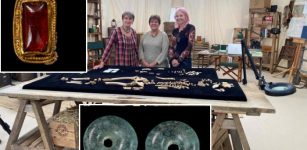 More Anglo-Saxon Burials And Artifacts Found In Lincolnshire, UK
Archaeology | Jan 11, 2024
More Anglo-Saxon Burials And Artifacts Found In Lincolnshire, UK
Archaeology | Jan 11, 2024 -
 Napta Playa – Egypt’s Stonehenge And Its Ancient Astronomical Alignments
Featured Stories | Feb 18, 2018
Napta Playa – Egypt’s Stonehenge And Its Ancient Astronomical Alignments
Featured Stories | Feb 18, 2018 -
 There Is A Problem With The Footprints Claimed As Evidence Of Ice Age Humans In North America – Scientists Say
Archaeology | Nov 16, 2022
There Is A Problem With The Footprints Claimed As Evidence Of Ice Age Humans In North America – Scientists Say
Archaeology | Nov 16, 2022 -
 1,000 Bog Bodies From Across Scandinavia Reveal More Ancient Secrets – Here’s What Scientists Found
Archaeology | Mar 20, 2023
1,000 Bog Bodies From Across Scandinavia Reveal More Ancient Secrets – Here’s What Scientists Found
Archaeology | Mar 20, 2023 -
 Knights Templar – Among The Most Wealthy And Powerful Of The Western Christian Military Orders
Featured Stories | Jun 11, 2020
Knights Templar – Among The Most Wealthy And Powerful Of The Western Christian Military Orders
Featured Stories | Jun 11, 2020 -
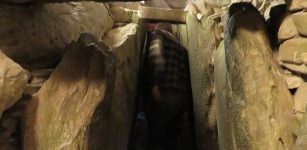 Gigantic Neolithic Newgrange Monument: A Temple, Astronomical Observatory Or Ancient Tomb?
Civilizations | Aug 14, 2016
Gigantic Neolithic Newgrange Monument: A Temple, Astronomical Observatory Or Ancient Tomb?
Civilizations | Aug 14, 2016 -
 Mystery Of King Solomon’s Mines: An Unsolved Ancient Enigma
Featured Stories | Aug 9, 2018
Mystery Of King Solomon’s Mines: An Unsolved Ancient Enigma
Featured Stories | Aug 9, 2018 -
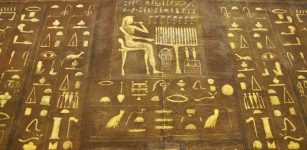 Decipher Hieroglyphs And Ancient Egyptian Images With Google’s AI Fabricius
Linguistic Discoveries | Jul 22, 2020
Decipher Hieroglyphs And Ancient Egyptian Images With Google’s AI Fabricius
Linguistic Discoveries | Jul 22, 2020 -
 Nilometer: Innovative Tool Measuring The Nile’s Water Levels In Pharaonic Egypt
Featured Stories | Jun 1, 2024
Nilometer: Innovative Tool Measuring The Nile’s Water Levels In Pharaonic Egypt
Featured Stories | Jun 1, 2024 -
 Beads Show European Trade In African Interior Used Indigenous Routes
Archaeology | Sep 17, 2022
Beads Show European Trade In African Interior Used Indigenous Routes
Archaeology | Sep 17, 2022 -
 1,000-Year-Old Bone Skate Found In Moravian City Of Přerov, Czech Republic
Archaeology | Mar 20, 2024
1,000-Year-Old Bone Skate Found In Moravian City Of Přerov, Czech Republic
Archaeology | Mar 20, 2024 -
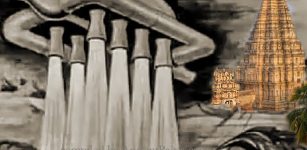 Vimanas Of The Rama Empire: Flying Machines Dominated Ancient Skies In Distant Past
Ancient Technology | Jul 23, 2017
Vimanas Of The Rama Empire: Flying Machines Dominated Ancient Skies In Distant Past
Ancient Technology | Jul 23, 2017 -
 European Mythical Creatures Encountered In The Witcher Series
Featured Stories | Feb 4, 2020
European Mythical Creatures Encountered In The Witcher Series
Featured Stories | Feb 4, 2020 -
 10 Norse Gods Who Vikings Gained Strength From
Featured Stories | May 14, 2018
10 Norse Gods Who Vikings Gained Strength From
Featured Stories | May 14, 2018 -
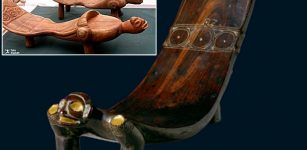 Curious Ritual Wooden ‘Duho’ Stool Of Ancient Taino People
Ancient Traditions And Customs | Sep 12, 2017
Curious Ritual Wooden ‘Duho’ Stool Of Ancient Taino People
Ancient Traditions And Customs | Sep 12, 2017 -
 Ancient Life-Size Marble Statue Of Hercules Discovered In Rome
Archaeology | Jan 28, 2023
Ancient Life-Size Marble Statue Of Hercules Discovered In Rome
Archaeology | Jan 28, 2023
